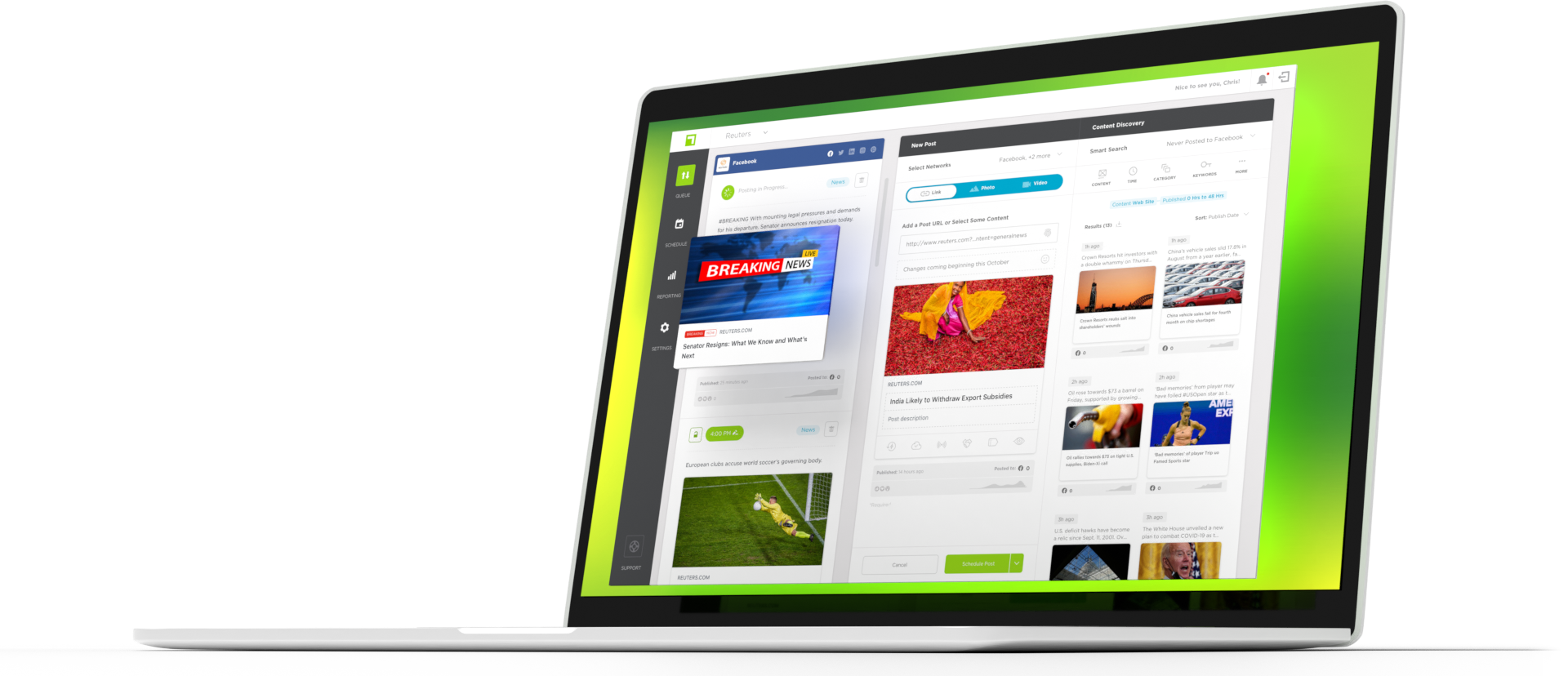The Facebook algorithm and its inner workings are an often-changing and seldom understood facet of social media strategy. While publishers are continually attempting to “crack the algorithm” to reach a larger audience, the question remains—what performance metrics have the greatest impact on distribution with the Facebook feed?
Over the last few years, Facebook’s efforts to keep users on its platform have spawned engagement incentive programs for select publishers and increased the lore around the importance of on-platform engagement.
After analyzing our customer’s performance data from the last year, we see that engagement on Facebook posts is becoming an increasingly dominant factor impacting impressions.
What is the Facebook algorithm exactly?
The Facebook algorithm uses AI and machine learning to personalize feeds by determining post relevance for each user. The complexities of this algorithm mean no two users will have identical posts in the same order in their feed. However, commonalities in their feeds depend on the commonalities of those users (i.e. an audience).
It is important to note that the Facebook feed and Reels use separate algorithms—our investigation focuses on the feed.
What is the relationship between post engagement and post impressions?
With Facebook’s shift toward on-platform activity, we studied engagements to see if the data reflected this focus.
Across our customer base, Facebook post engagements and organic impressions are highly correlated and increasingly so over the past year. This relationship illustrates that posts garnering higher engagements are more likely to get surfaced to more users, ultimately generating greater impression numbers.

We studied the correlation between post engagements and post impressions to assess the extent to which engagements foster more exposure on a post. Not only was there a high correlation, but the relationship has only become more correlated each quarter since Fall 2023. This relationship shows that engagements on a post play a dominant factor in the post’s distribution!
What should publishers do with this information?
Social media was initially created to have two-way communication. If every post from a publisher is focused on traffic-driving, you have a one-sided relationship. Publishers need to ensure their posts achieve a mix of traffic-driving and engagement-centric objectives. The impressions of engagement-centric posts can positively impact the impressions of a traffic-driving post because the former lifts the health of a page overall.
Traction begets traction!
Facebook says that if a post triggers a lot of conversation, the algorithm applies “action-bumping logic” to show that post to a user again. This logic also applies when a user’s friends engage with a post.
Publishers should examine their posting strategy, especially if their primary goal is traffic growth. Sometimes, the best way to grow traffic is to adopt tactics that are unrelated to traffic.
Reviewing your social media strategy? Reach out to True Anthem today for a free demo.

